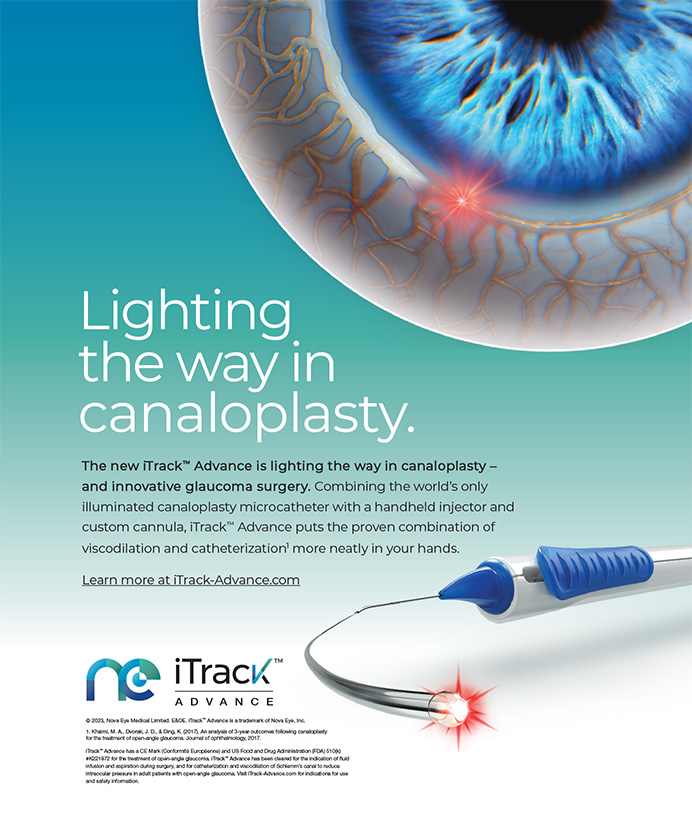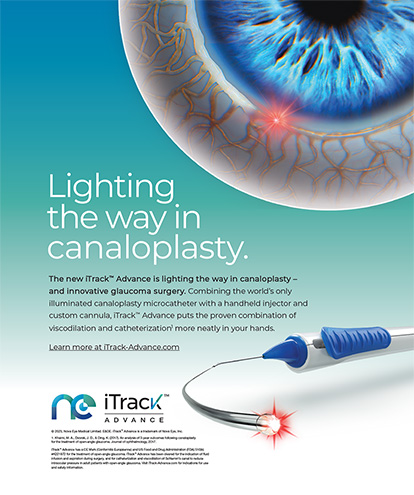The Accreditation Council for Graduate Medical Education has six core competencies that are required for resident training accreditation in ophthalmology. 1 The American Board of Ophthalmology has recommended including surgery as the seventh core competency.2 One cannot passively become a competent surgeon by only reading textbooks or watching videos. Residents must obtain hands-on surgical training in the OR or wet laboratory or with a simulator. In fact, the Accreditation Council for Graduate Medical Education has mandated that residents have access either to a wet laboratory or to simulators for skill development.1
Although commonly performed, cataract surgery is considered one of the most difficult surgeries to learn, with a nearly 10-fold increase in complications during surgeries performed by residents compared with surgeries performed by experienced surgeons.3 Learning how to perform cataract surgery in a real OR is preferred. However, with the rising costs of teaching, patients’ high expectations, and increasing time constraints, educators are forced to seek out surrogates for OR training experience. Surgical simulators have recently become a viable option for some teaching programs.
ADVANTAGES
Training with a surgical simulator offers several advantages. Similar to a wet laboratory, human cost in the form of adverse outcomes for patients is minimized, and residents can practice in a relaxed learning environment at their own pace.4 Additionally, training on surgical simulators can be incorporated into a curriculum that is available to residents at any time.5 The presence or absence of a surgical preceptor need not be a limiting factor in the learning process. This is not to say that simulator training can serve as a substitute for individualized training with supervising surgeons. Attempts to use simulators exclusively in other surgical specialties have failed.6 Rather, surgical simulators can serve as a complementary tool for residents’ education. This technology is already being used in many different fields of surgical education, from neurosurgery7 to obstetrics and gynecology.8
EFFECTIVENESS
There are several different ophthalmic surgical simulators. One such system is the EYESI (VRmagic GmbH, Mannheim Germany). Originally designed as a vitreoretinal surgical simulator, EYESI now has cataract surgery modules for continuous curvilinear capsular opening, hydrodissection, and the lens’ removal. Studies evaluating the effectiveness of simulators on residents’ performance and outcomes have reported positive results. Solverson et al found that, with practice on the EYESI simulator, novice surgeons showed continued and significant improvement.9 Similarly, Feudner et al concluded that the use of a simulator improved the surgical performance of creating a continuous capsulorhexis in the wet laboratory.10
RESPONSE
Koch and colleagues surveyed trainees and experienced surgeons participating in a dry laboratory with a simulator. The investigators evaluated the participants’ acceptance of a simulator as a training method. Aspects scored included quality, complexity, clinical impact, learning effect, and overall impression. The majority of both groups accepted and highly appreciated the simulator as a training tool.11
LIMITATIONS AND IMPROVEMENTS
The currently available surgical simulators allow residents to practice for microsurgery by familiarizing them with the maneuvers performed under a microscope using their hands and feet. One limitation is the lack of cognitive feedback from the program itself. A resident may practice steps in surgery, but without an evaluation of his or her performance, he or she may not reap the full educational benefit. Alternatively, if a resident is incorrectly performing the surgical steps without feedback, he or she may develop poor surgical techniques.12 Becoming a successful cataract surgeon involves more than practicing the physical movements of the hand. Effective training involves imparting cognitive knowledge, visual-spatial knowledge, and technical skill. Dividing the learning process into respective components can greatly benefit residents by enabling them to master one step at a time.
A cognitive simulator, the Virtual Mentor computer program (Massachusetts Eye and Ear Infirmary, Boston, MA) is being developed to provide the intellectual training that is usually offered by a surgical mentor.13 The creators performed a prospective, multicenter, masked trial of a prototype of the program and found a statistically significant improvement in knowledge accumulation after its use compared to traditional teaching tools.14
CONCLUSION
The development of physical and cognitive surgical simulators offers a different approach to learning than the traditional apprenticeship model. Simulators cannot replace experienced surgical preceptors, but they are fast becoming an attractive and acceptable adjunct in surgical curricula. As the technology improves, the simulations will become more realistic, and the experience will become more valuable. Simulation programs will play a greater role in future surgical education.
Bonnie An Henderson, MD, is a partner in Ophthalmic Consultants of Boston and an assistant clinical professor at Harvard Medical School. She received a percentage of royalties from Virtual Mentor as a cocreator of Virtual Mentor. Dr. Henderson may be reached at (781) 487-2200, ext. 3321; bahenderson@eyeboston.com.
- Accreditation Council for Graduate Medical Education.ACGME Program Requirements for Graduate Medical Education In Ophthalmology.July 1,2007.www.acgme.org/acWebsite/downloads/.../240ophthalmology_07012007.pdf.Accessed February 22,2011.
- Mills R,Mannis M.Report of the American Board of Ophthalmology task force on the competencies.Ophthalmology. 2004;111(7):1267-1268.
- Tarbet KJ,Mamalis N,Theurer J,et al.Complications and results of phacoemulsification performed by residents.J Cataract Refract Surg.1995;21(6):661-665.
- Henderson BA,Ali R.Teaching and assessing competence in cataract surgery.Curr Opin Ophthalmol.2007;18(1):27-31.
- Sandrick K.Virtual reality surgery:has the future arrived? Bull Am Coll Surg.2001;86(3):42-43.
- Gerson LB,Van Dam J.A prospective randomized trial comparing a virtual reality simulator to bedside teaching for training in sigmoidoscopy.Endoscopy.2003;35(7):569-575.
- Spicer MA,van Velsen M,Caffrey JP,Apuzzo ML.Virtual reality neurosurgery:a simulator blueprint.Neurosurgery. 2004;54(4):783-797.
- Letterie GS.Medical education as a science:the quality of evidence for computer-assisted instruction.Am J Obstet Gynecol. 2003;188:849-853.
- Solverson DJ,Mazzoli RA,Raymond WR,et al.Virtual reality simulation in acquiring and differentiating basic ophthalmic microsurgical skills.Simul Healthc.2009;4(2):98-103.
- Feudner EM,Engel C,Neuhann IM,et al.Virtual reality training improves wet-lab performance of capsulorhexis:results of a randomized,controlled study.Graefes Arch Clin Exp Ophthalmol.2009;247(7):955-963.
- Koch F,Koss MJ,Singh P,Naser H.Virtual reality in ophthalmology [in German].Klin Monbl Augenheilkd.2009;226(8):672-676.
- Henderson BA,Ament CS.Optimizing resident education in cataract surgery.Curr Opin Ophthalmol.2011;22(1):64-67.
- Henderson BA,Neaman A,Kim BH,Loewenstein J.Virtual training tool.Ophthalmology.2006;113:1058-1059.
- Henderson BA,Kim JY,Golnik KC,et al.Evaluation of the virtual mentor cataract training program.Ophthalmology. 2010;117(2):253-258.


